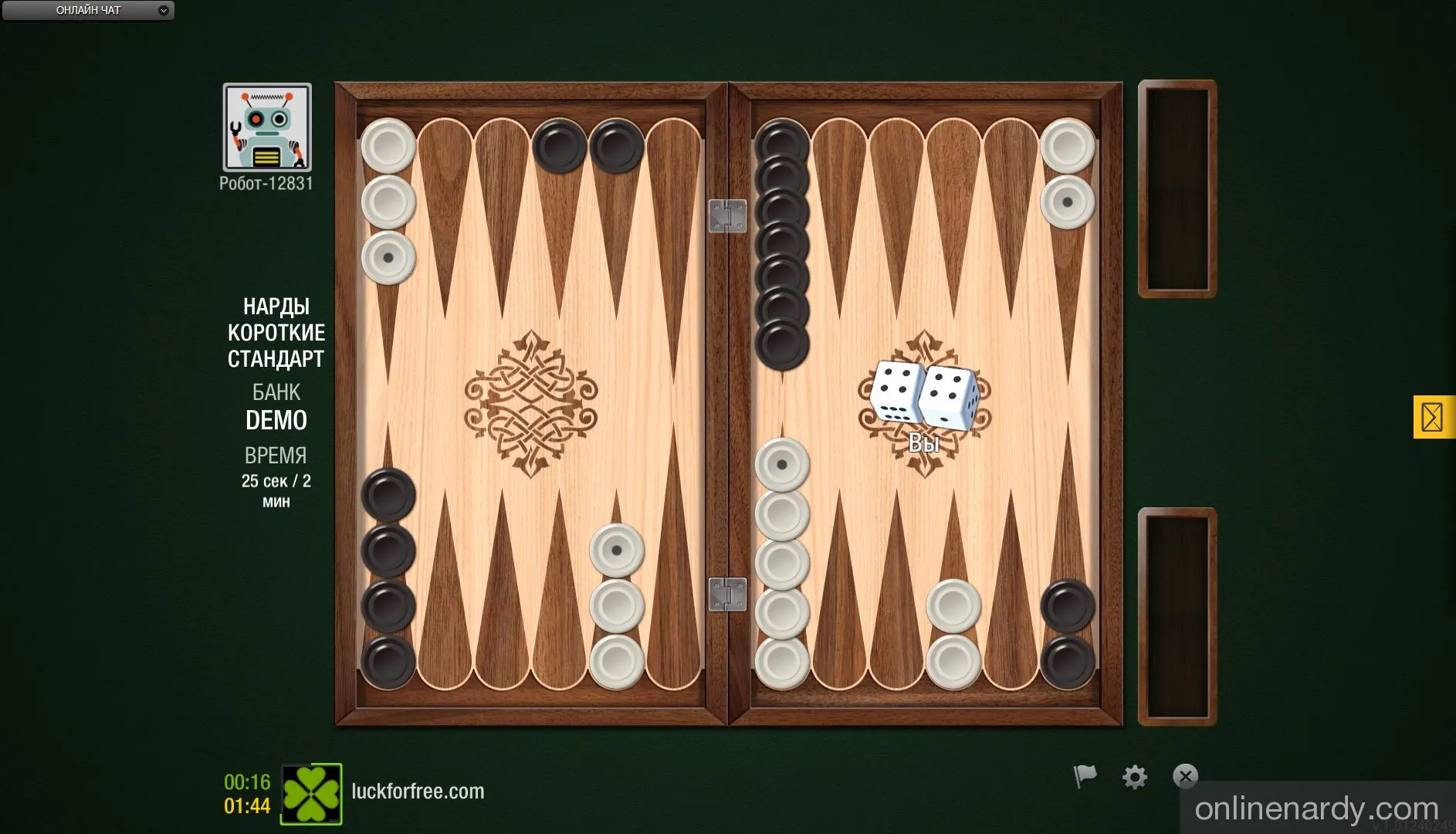- Online Backgammon
- /
- Short backgammon
- /
- Rules
Short backgammon rules of the game
The game has not lost its popularity for almost five thousand years. The exact place and time of its emergence are unknown to anyone, but there are many legends dedicated to the history of its origin. Game enthusiasts believe that it forces strategic thinking, attention to detail, and planning several moves ahead. This is why children start learning the basic rules of the game from the age of five or six.
Amateurs of the game spend a lot of time at the board, and frequent competitions, tournaments, and friendly gatherings only fuel their interest. Official rules were established in 1743, and world championships are held based on them.
Rules of Short Backgammon
In Western countries, a form of entertainment called short backgammon has gained wider popularity, and we will discuss the rules of the game in this article.
Two players participate in the match. To start the battle, players will need a board, thirty checkers of two contrasting colors, and dice. The game field consists of twenty-four points, divided into four zones: home, opponent's home, outer board, opponent's outer board. The line between the home and outer board is called the bar.

In short backgammon, the setup is as follows: each player has 5 checkers in the 6th triangle, 2 in the 24th, 3 in the 8th, and 5 in the 13th.
The participant's task is to make a full circle around the board, bring the checkers back home, and then bear them off the board.
Whoever makes the first move is determined as follows: each participant takes turns rolling one die, and whoever gets the higher number starts the match. If the same number of points is rolled, the players continue rolling until different numbers come up. Both dice are then used. Checkers always move in a circular direction.
The values on the dice determine how many pips the player can move the checkers. Checkers move strictly in one direction: white ones move clockwise, black ones move counterclockwise. A checker can only move to a triangle where there are no two or more opponent's checkers.
The values rolled on the dice represent separate moves for the player. So, if numbers 2 and 3 are rolled, the player moves one checker by 2 points and another by 3 points, in some cases moving one checker by 5 points at once. Rolling a double allows the player to move four times.
Rules of Short Backgammon for Beginners
Both numbers rolled on the dice must be used. When only one value can be used, the player must do so. When both numbers can be played separately, the player must use the larger one. A player skips a turn if there is no way to make a move.
A blot is a triangle with only one checker. When an opponent's checker lands on this point, it hits the opponent, and their checker is moved to the bar. Therefore, one should try to place two or more checkers in one triangle, protecting them from being hit. When a player has checkers on the bar, they must bear them off. The number rolled on the thrown die returns the checker to the point with the corresponding number.

In short backgammon, after all setups, movements, and returning 15 checkers home, the player must bear them off the board. To do this, the player must roll the dice, and the checkers on the triangles whose numbers correspond to the rolled numbers are removed from the board. For example, if 3 points are rolled, the checker on point number three is removed. If the rolled value indicates an empty triangle, the player can move a checker from points whose numbers are lower than the number of points rolled on the die.
The winner is the player who manages to bear off their 15 checkers faster than the opponent. The instructions for this entertainment are simple, so after learning them, users can familiarize themselves with the basics of the game, and a few matches will add confidence in their own abilities.